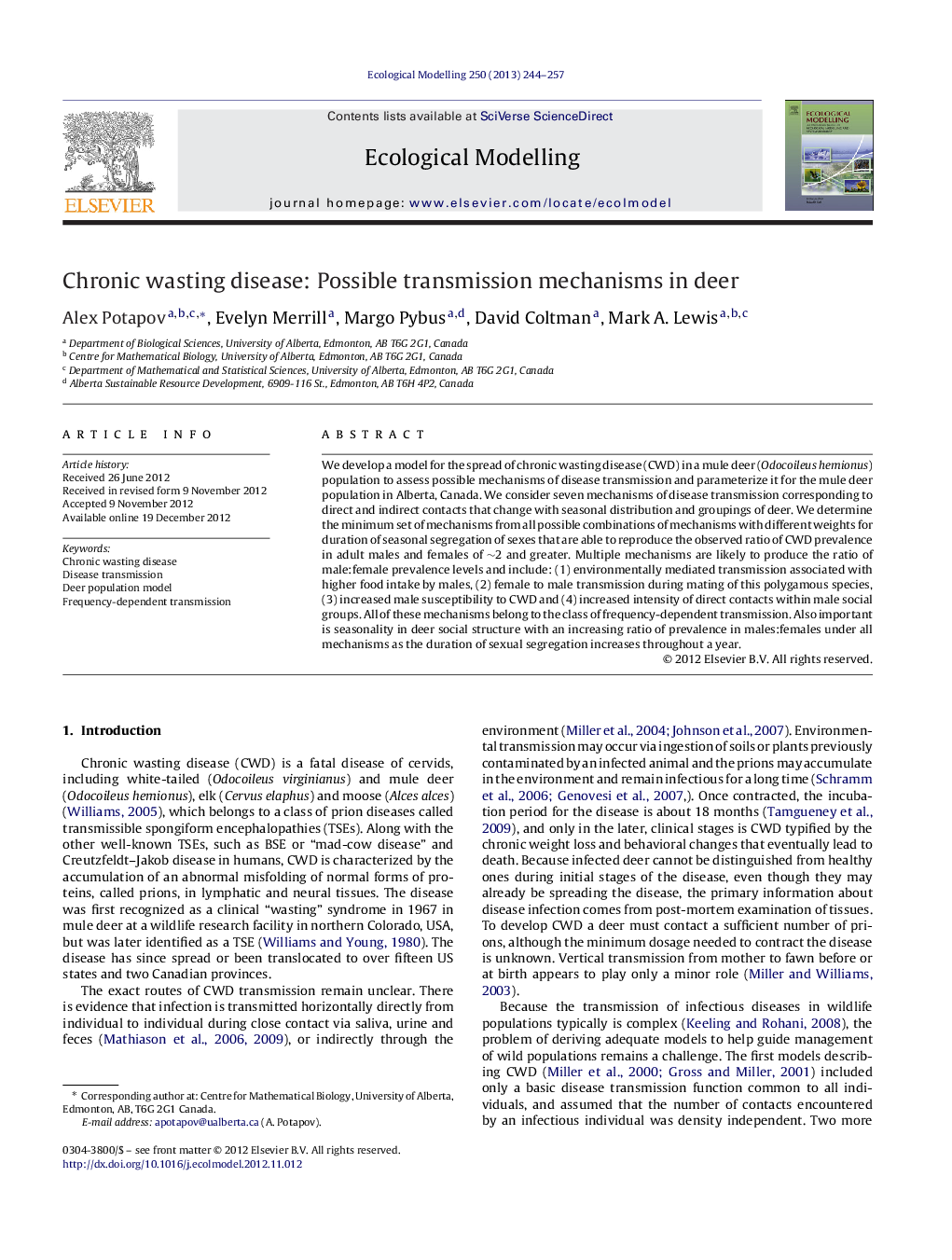| Article ID | Journal | Published Year | Pages | File Type |
|---|---|---|---|---|
| 4376253 | Ecological Modelling | 2013 | 14 Pages |
We develop a model for the spread of chronic wasting disease (CWD) in a mule deer (Odocoileus hemionus) population to assess possible mechanisms of disease transmission and parameterize it for the mule deer population in Alberta, Canada. We consider seven mechanisms of disease transmission corresponding to direct and indirect contacts that change with seasonal distribution and groupings of deer. We determine the minimum set of mechanisms from all possible combinations of mechanisms with different weights for duration of seasonal segregation of sexes that are able to reproduce the observed ratio of CWD prevalence in adult males and females of ∼2 and greater. Multiple mechanisms are likely to produce the ratio of male:female prevalence levels and include: (1) environmentally mediated transmission associated with higher food intake by males, (2) female to male transmission during mating of this polygamous species, (3) increased male susceptibility to CWD and (4) increased intensity of direct contacts within male social groups. All of these mechanisms belong to the class of frequency-dependent transmission. Also important is seasonality in deer social structure with an increasing ratio of prevalence in males:females under all mechanisms as the duration of sexual segregation increases throughout a year.
► Deer population model with density dependent recruitment is created. ► Submodels for 7 CWD transmission paths are derived, direct and environmental. ► Mechanisms and their combinations compared against observed prevalence pattern. ► Only frequency-dependent mechanisms can reproduce twice higher male prevalence. ► Seasonality of deer social behavior is an important factor in disease transmission.
